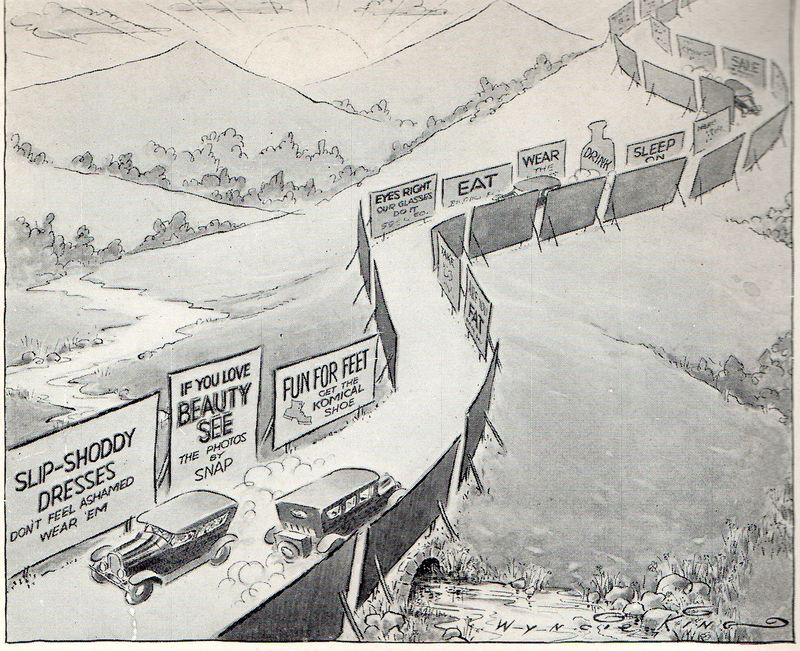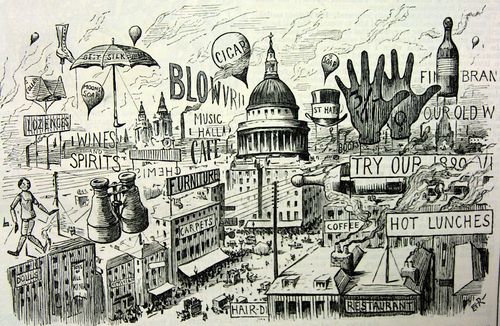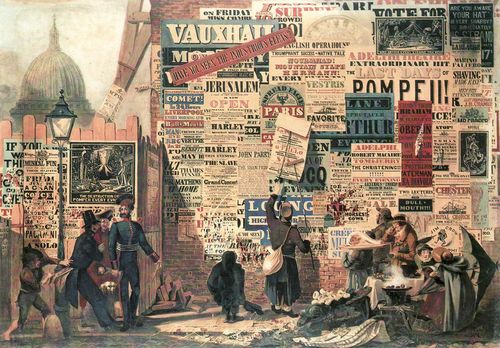JF Ptak Science Books Post 2281
The way of the new world, the spread of commercialism and of consumerism, the increase in the size of a middle class that was actually approaching what we today would think of as a middle class, the wanting rise of places for disposable income to go from millions of new people with spare money to spend, led the sellers of stuff-immemorial to start advertising their bits on the side of out-of-doors everything. The fight for the attention span of the new consumer went from the newspapers and magazines to the side of buildings and then, as the motor car began to proliferate, to thousands and hundreds of thousands of miles of roadway.
Billboards to buildings, and buildings as billboards, and more--as some of the early branders might've seen it, the sky was the limit, or at least so for this caricature of the impending future, as seen in Punch, or the London Chiarivari (‘Picturesque London – or, sky-signs of the times’, 6 September 1890, p. 119.)
That of course was a view to the near-future--the reality of the situation was more like what was portrayed by a watercolor by Orlando Parry, ‘A London street scene’, in 1834, so imaging a step-beyond may not have been too difficult a thing to portray:
[Image Source: Ragpickinghistory http://ragpickinghistory.co.uk/tag/london/]
A more recent example of the threat of rampant billboardism and the struggle for the pocket and attention of teh consumer is seen in this 1931 illustration that was tucked inside this almost-provocatively-named pamphlet, Billboards ad Aesthetic Legislation, New Applications of Police Power (published by the St. Louis Public Library). It is astonishing to think of the vast changes that took place in the remaining American frontier, taking place so quickly--two generations separated the last of the great cattle drives to billboard legislations along auto routes in the western states.

Fighting for the pennies in the pocket bottoms of the working poor and the middle class is getting to be Old Stuff, an interesting chapter in the History of the Assault on the Attention Span of Human Beings.





Comments